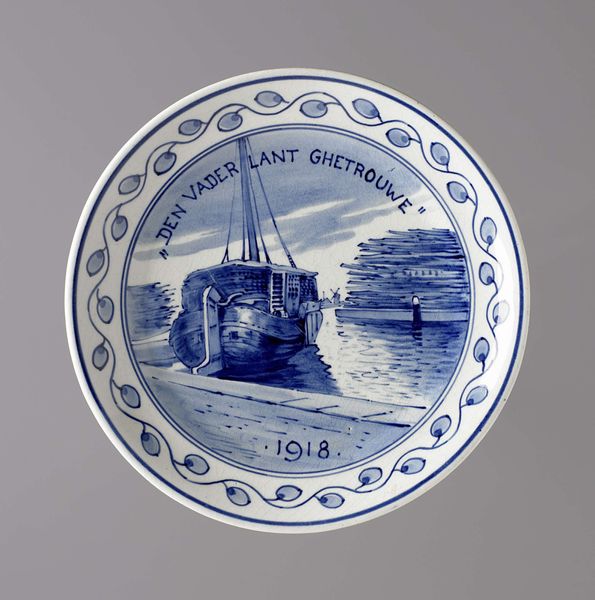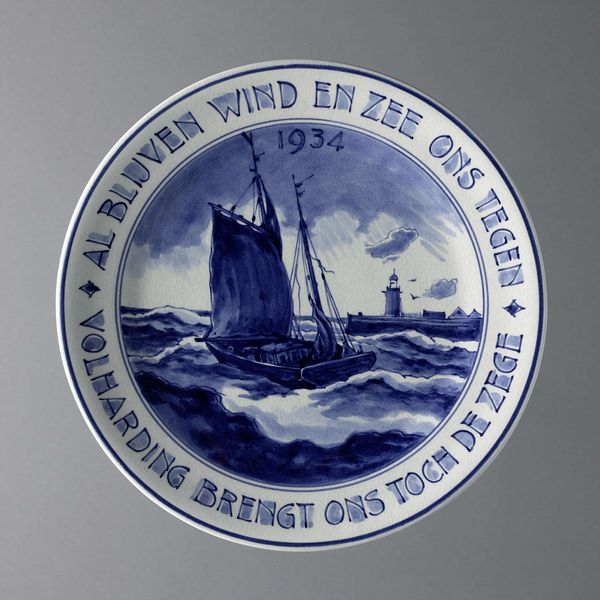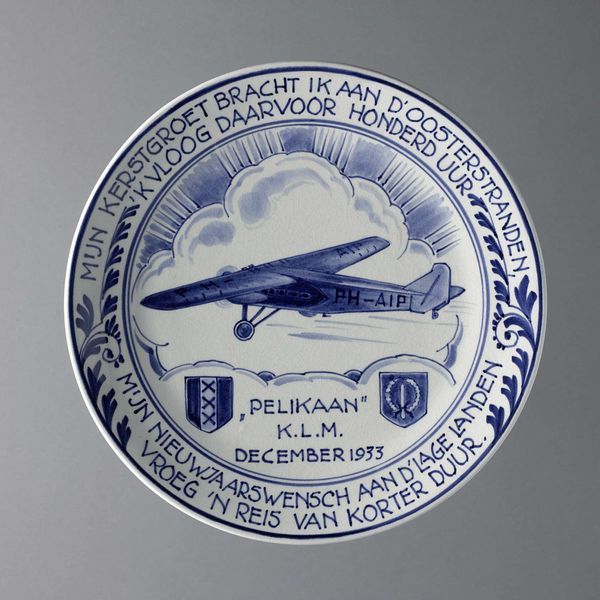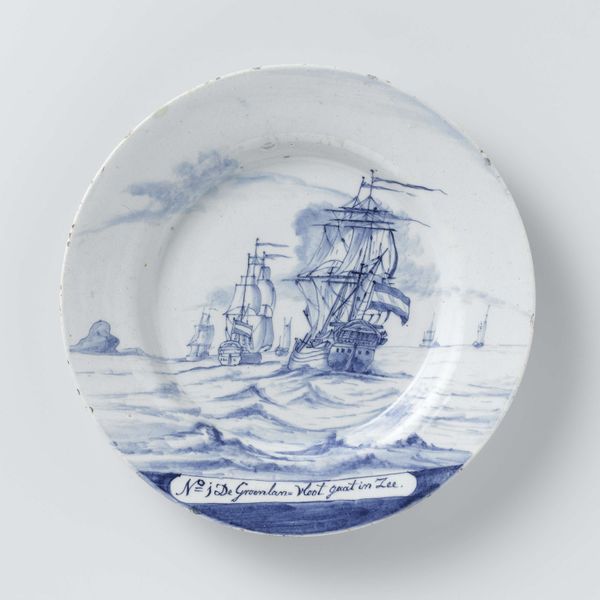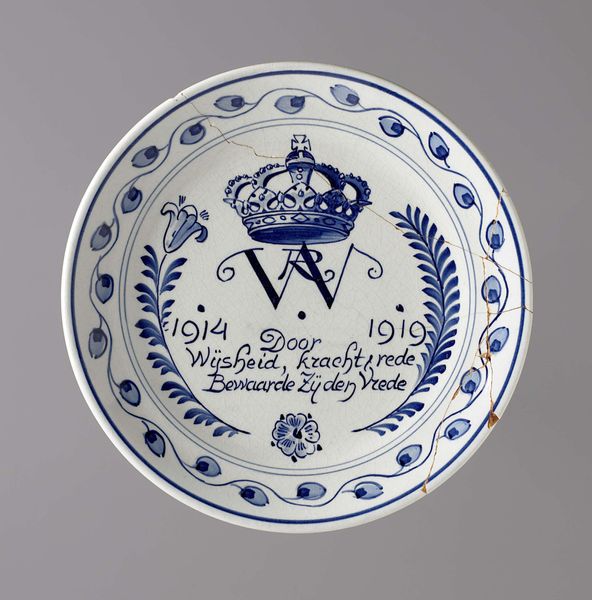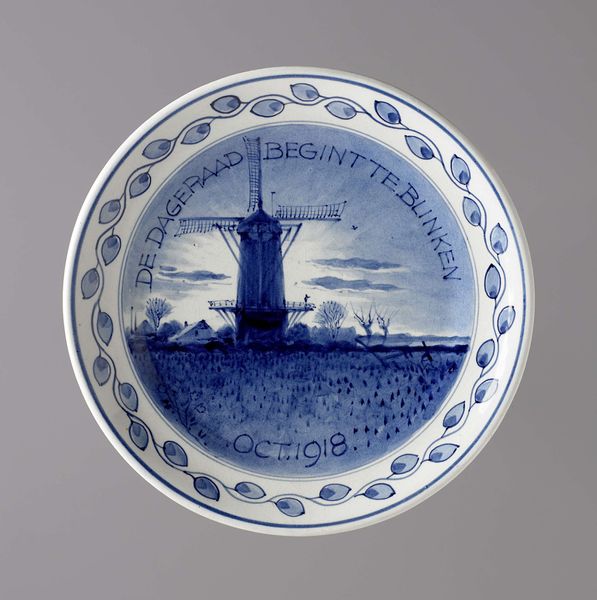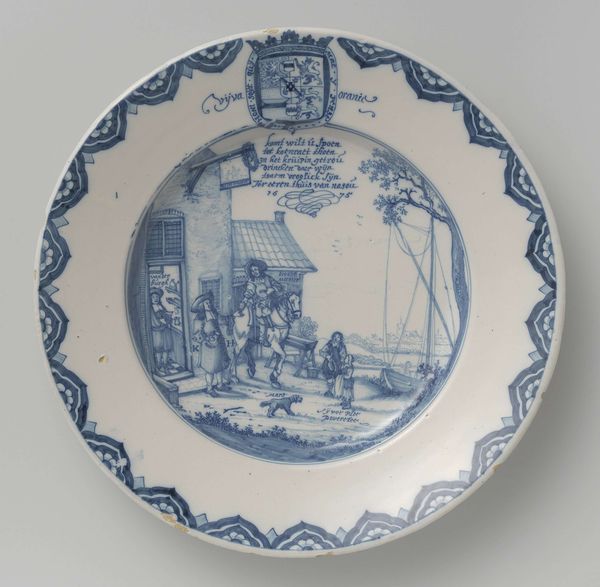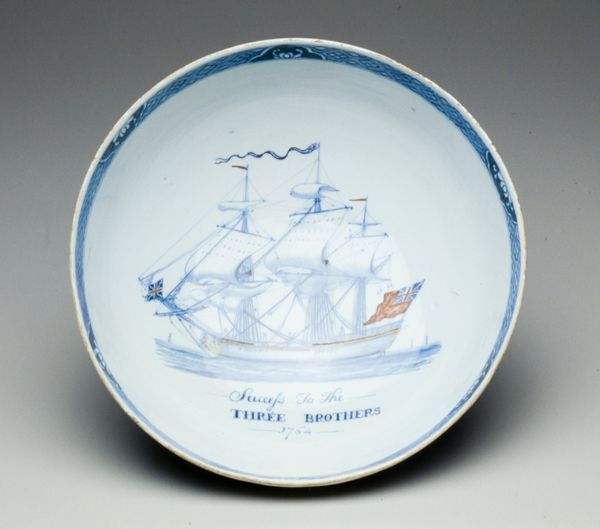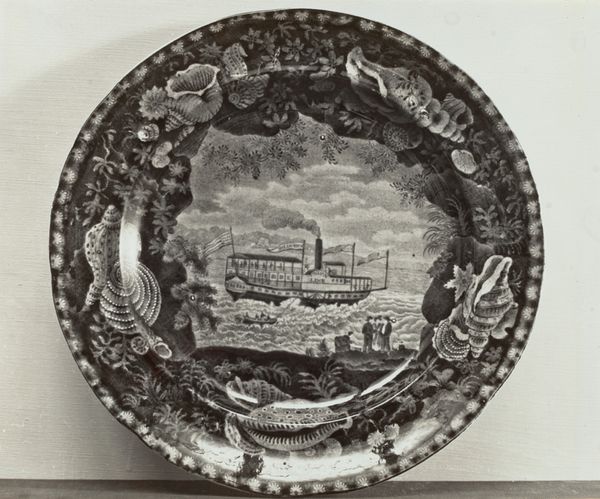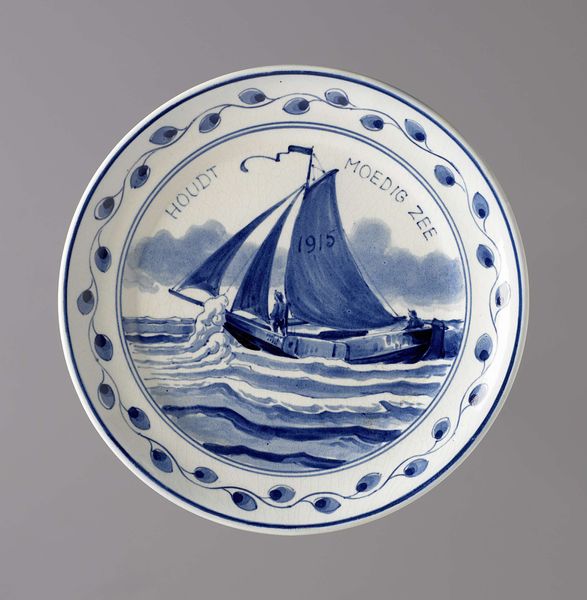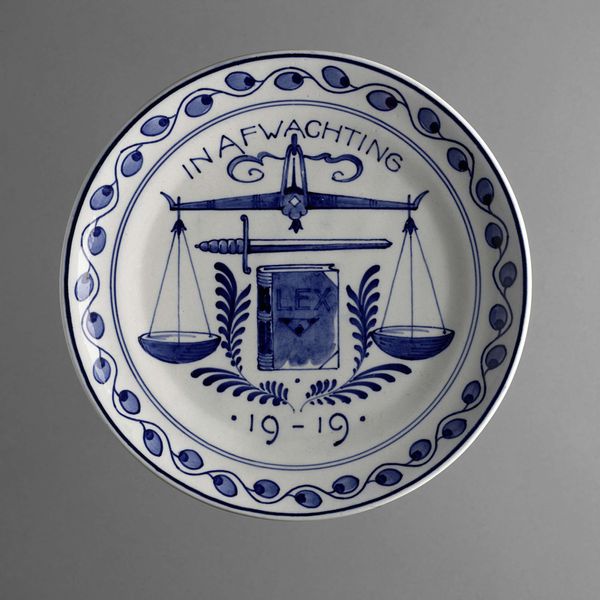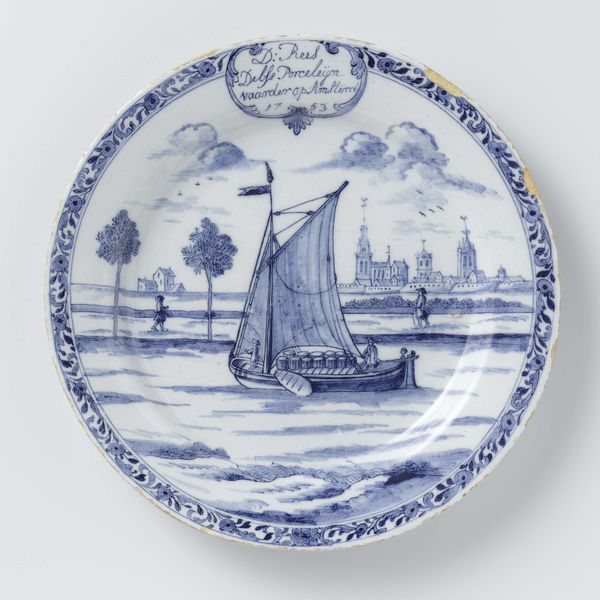
painting, ceramic
#
narrative-art
#
painting
#
landscape
#
ceramic
#
figuration
#
decorative-art
Dimensions: diameter 18.3 cm, height 2.3 cm
Copyright: Rijks Museum: Open Domain
Curator: Here we have a decorative plate commemorating the world voyage of the submarine Hr. Ms. K XVIII. This ceramic piece, created by De Porceleijne Fles in 1935, captures a key moment in Dutch naval history. Editor: My first impression is that this is less about the journey itself, and more about how the submarine became a symbol. It is like a romantic souvenir depicting something quite powerful. Curator: Precisely. Look at how the plate uses the traditional Delftware style, typically associated with peaceful landscapes, but instead, it portrays this imposing submarine, cutting through the ocean. The inscription around the rim references the "old sailors blood still flowing through Dutch veins", linking modern naval exploits with a historic seafaring legacy. Editor: Yes, there is a tension between the militaristic subject matter and the folksy style. The dates provided anchor us to a specific period between the World Wars, a time of both national pride and growing unease in Europe. This commemorative object then participates in nation-building by celebrating Dutch technological achievement. The decorative swirls are pretty! Curator: And the submarine itself, while detailed, almost seems softened by the artistic rendering, its power muted somewhat. It reinforces the idea of a glorious voyage. By commissioning such a piece, the naval officers of the voyage clearly sought to shape public memory surrounding their adventure. The distribution would also appeal to collectors of historic art. Editor: Absolutely. It becomes less about actual naval strategy or the nitty-gritty details of life aboard, and more about bolstering a national image. It is interesting how historical moments are filtered through a lens of celebratory art. Do you see that subtle crackling glaze effect that hints at age? I wonder about the object's care over the decades and how it arrived here in the museum. It seems ripe for deconstruction in light of post-colonial theory and resource acquisition during a very complex geopolitical climate. Curator: Those layers of meaning make this piece such an evocative object of study. By examining both the aesthetics and historical context, we begin to understand the purpose it served, beyond mere decoration. Editor: Right. This plate prompts a conversation about national identity, militarism, and the role of art in perpetuating a narrative of progress—an aesthetically appealing object, sure, but certainly ripe for analysis through today's perspective.
Comments
No comments
Be the first to comment and join the conversation on the ultimate creative platform.
